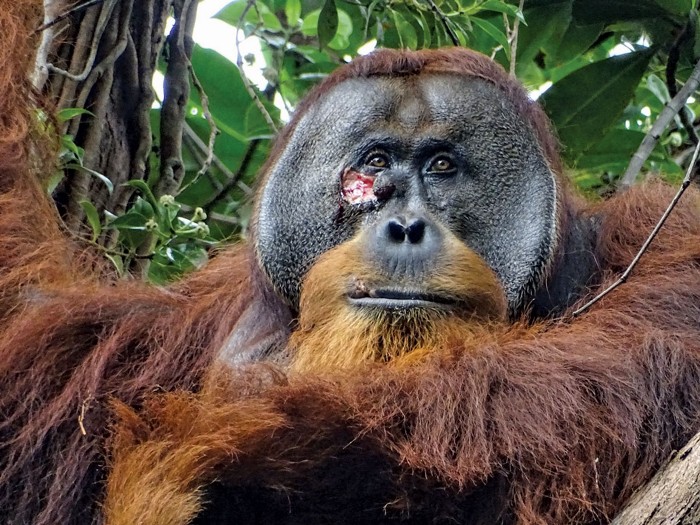Advertisement
Grab your lab coat. Let's get started
Welcome!
Welcome!
Create an account below to get 6 C&EN articles per month, receive newsletters and more - all free.
It seems this is your first time logging in online. Please enter the following information to continue.
As an ACS member you automatically get access to this site. All we need is few more details to create your reading experience.
Not you? Sign in with a different account.
Not you? Sign in with a different account.
ERROR 1
ERROR 1
ERROR 2
ERROR 2
ERROR 2
ERROR 2
ERROR 2
Password and Confirm password must match.
If you have an ACS member number, please enter it here so we can link this account to your membership. (optional)
ERROR 2
ACS values your privacy. By submitting your information, you are gaining access to C&EN and subscribing to our weekly newsletter. We use the information you provide to make your reading experience better, and we will never sell your data to third party members.
Natural Products
Injured orangutan seen applying medicinal plant to wound
The animal ate the plant, administered plant juices to the wound area, and covered it with chewed plant matter
by Alla Katsnelson, special to C&EN
May 3, 2024

People have tapped plants’ medicinal properties for millennia. But they may not be the only primates to do so. In the first reported case of a wild animal actively applying a medically-active plant to a wound, researchers observed a Sumatran orangutan named Rakus treating an injury to his face. The orangutan methodically applied to that wound a poultice made from the juices and chewed leaves of an antibacterial, pain-relieving plant called Fibraurea tinctoria, which is used in traditional medicine (Sci. Rep. 2024, DOI: 10.1038/s41598-024-58988-7).
Researchers first observed a facial injury on Rakus on June 22, 2022. Three days later, they saw him feeding on the plant. “This was quite interesting because it’s not a common feeding plant,” says Isabelle B. Laumer, a primatologist at the Max Planck Institute of Animal Behavior who co-led the work. Out of 390,000 feeding instances, researchers observed the apes eating this plant 0.3% of the time. After eating for about 13 min, Rakus switched to chewing, drawing the plant‘s juices from his mouth, and applying them to his wound for another 7 min. Then he applied the masticated plant matter directly onto the wound. He fed on the plant for another half hour and came back to eat more the next day. Over the next week, his wound healed.
Chimpanzees in Gabon have been observed applying squished flying insects into their wounds, though it’s unknown whether the insects had medicinal properties. The fact that African great apes (chimpanzees) and now Asian great apes have been observed treating wounds, as humans do, suggests there may be some common cognitive mechanism for this behavior, which involves consciously associating pain relief with a specific substance, Laumer says.
Researchers can’t tell whether Rakus stumbled upon the plant’s medicinal effects independently or whether he learned to use it from others, Laumer says. Injuries are rare in the group, but the researchers are watching closely to try to catch another orangutan in the act of self-medicating.


Join the conversation
Contact the reporter
Submit a Letter to the Editor for publication
Engage with us on Twitter